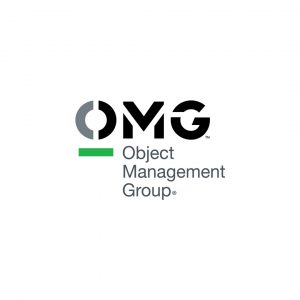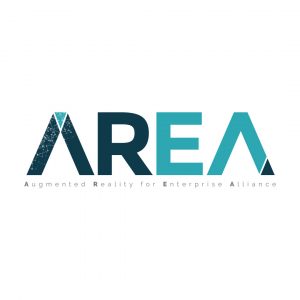Beyond the Headset: Empowering Frontline Inspections with the Untapped Potential of Voice

Inspections form the bedrock of safe and efficient operations across vital industries like manufacturing, aviation, utilities, and logistics. Yet, all too often, these critical processes are weighed down by the inefficiencies of paper trails, the tedium of manual data entry, and the inconsistencies of human interpretation. As organizations embrace digital transformation, hands-free technologies like voice interfaces and augmented reality are emerging as powerful allies, promising significant gains in safety, accuracy, and overall productivity.
The Augmented Reality for Enterprise Alliance (AREA), a leading voice in the adoption of immersive technologies, recently shed light on this evolution with their report, “The Adoption of Real-Time AR-assisted Inspections for Quality and Compliance”. This insightful report highlights the transformative potential of AR headsets in frontline inspection scenarios. However, the fundamental needs identified within – hands-free access to information, real-time documentation capabilities, and intuitive guided workflows – resonate just as powerfully with the ruggedized mobile devices that remain the workhorse platform for a vast majority of frontline teams.
The Voice Advantage: Adding a Layer of Seamless Efficiency to Inspections
While AR offers a visually immersive experience, voice interfaces provide an equally compelling – and often more readily deployable – pathway to hands-free operation. Imagine inspection teams, whether clad in gloves or navigating complex machinery, interacting effortlessly with their devices simply by speaking. This capability translates directly into tangible benefits:
- Enhanced Safety: By freeing up hands and eyes, voice interfaces allow workers to maintain complete situational awareness, crucial in potentially hazardous environments. No more fumbling with screens or looking down to input data.
- Boosted Productivity: Voice commands streamline workflows, accelerate data capture, and provide instant access to information, significantly reducing the time spent on each inspection.
- Improved Accuracy: Verbal confirmations and dictation minimize errors associated with manual data entry and ensure consistent adherence to protocols.
- Reduced Cognitive Load: Voice-guided workflows and hands-free data input allow inspectors to focus on the task at hand, reducing mental fatigue and improving the quality of their observations.
Drawing inspiration from the AREA report, several compelling voice-enablement use cases emerge that directly address the evolving needs of industries where frontline workers often operate in challenging conditions. These applications aren’t confined to the realm of AR headsets; they seamlessly integrate with the ruggedized mobile devices already deployed across field service, logistics, and industrial landscapes. Voice interfaces provide a natural and intuitive way for workers to navigate complex procedures, capture critical data in real-time, and access essential information without ever breaking their stride or compromising their focus. And when powered by robust on-device speech recognition, these advantages are delivered with unwavering reliability and security, even in noisy, offline, or sensitive environments.
Unlocking Efficiency: Key Voice Use Cases for Inspection Workflows
- Voice-Driven Digital Checklists: Ensuring Safety and Compliance, Hands-Free
- How it works: Replace cumbersome paper-based forms and error-prone on-screen taps with simple verbal confirmations. Voice prompts guide inspectors through each required step, demanding spoken verification to ensure thoroughness and adherence to regulations.
- Value: Dramatically enhances safety protocols, improves inspection accuracy by ensuring no steps are missed, accelerates the process, and reduces the mental burden on inspectors.
- Voice-Activated App Navigation and Control: Keeping Focus Where it Matters Most
- How it works: Empower workers to navigate intricate inspection workflows or access digital Standard Operating Procedures (SOPs) using intuitive voice commands.
- Value: Preserves critical focus and maintains complete situational awareness, significantly mitigating the risk of accidents, especially in potentially hazardous operational zones.
- Voice-Based Data Entry and Inspection Logging: Capturing Insights in Real-Time
- How it works: Enable inspectors to verbally dictate their findings, observations, and log inspection results directly while performing the task.
- Value: Eliminates the redundant and time-consuming step of manual data entry, significantly improves the accuracy and immediacy of documentation, and creates a robust and easily auditable trail of inspections.
- Voice Search for Critical Reference Material: Knowledge at the Speed of Speech
- How it works: Allow frontline teams to instantly retrieve essential manuals, detailed procedures, or historical inspection reports using simple voice commands.
- Value: Minimizes operational downtime caused by searching for information and provides immediate access to the critical knowledge needed to make informed decisions in the field.
- Guided Procedures with Voice Interaction: Ensuring Consistency and Accelerating Training
- How it works: Voice interfaces can provide clear, step-by-step verbal guidance through complex inspection workflows, acting as a virtual assistant.
- Value: Significantly accelerates the onboarding process for new technicians and ensures consistent adherence to best practices across all inspections, regardless of experience level.
The Undeniable Value of On-Device Processing for Inspections
In the demanding environments where inspections take place, the advantages of on-device voice processing become even more pronounced. Eliminating the reliance on often unreliable or unavailable network connectivity in industrial facilities, remote sites, or high-security zones is paramount. On-device speech recognition guarantees immediate response times, keeps sensitive inspection data secure within the device, and reduces dependence on complex backend infrastructure. This translates directly into greater operational reliability, significantly lower latency, and a safer, more efficient experience for every frontline worker.
Keen Research provides the cutting-edge KeenASR SDK to voice-enable your frontline workflows. Contact us today at https://keenresearch.com or [email protected] to discuss your needs.



